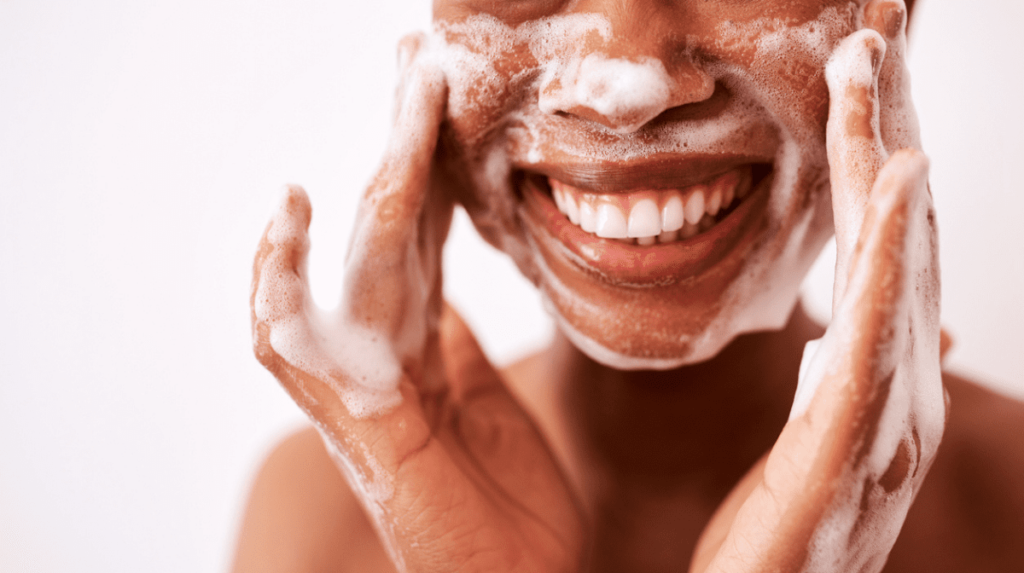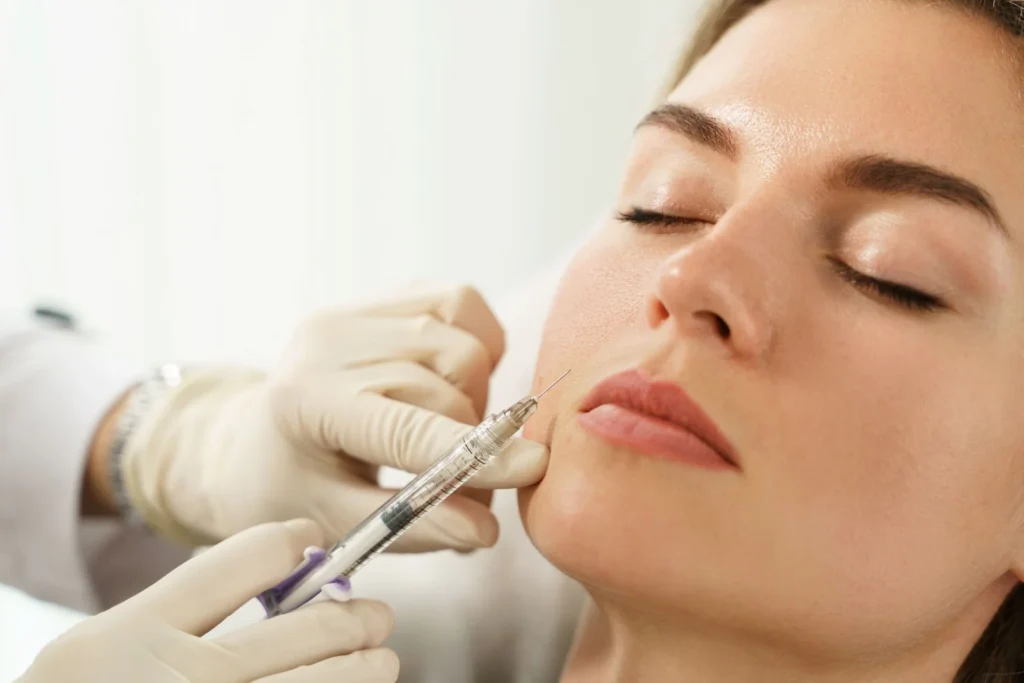
Noticed dark patches or uneven skin tone around your mouth? This common concern, often referred to as perioral hyperpigmentation, affects many individuals and can be both frustrating and confidence-denting.
The good news? It’s typically cosmetic and highly treatable. Let’s explore the causes and the most effective ways to restore your skin’s natural glow.
What Causes Dark Pigmentation Around the Mouth?
Before diving into treatment options, it’s crucial to understand what might be causing the dark patches around your mouth. The skin in this area is sensitive and often exposed to a variety of internal and external stressors, making it especially prone to pigmentation. Here’s a closer look at the most common culprits:
1. Post-Inflammatory Hyperpigmentation (PIH)
This is one of the leading causes of dark spots on the skin, particularly after inflammation. PIH occurs when the skin overproduces melanin in response to injury or irritation. Think of it as the skin’s version of a bruise that lingers long after the original problem has healed.
Common triggers include acne, eczema, allergic reactions, and even waxing or harsh exfoliation. These dark spots can range from light brown to deep grey depending on your skin tone and how deep the pigment sits. PIH is especially common in darker skin tones, where the melanocytes (pigment-producing cells) are more reactive.
2. Hormonal Changes
If the pigmentation seems to flare up during pregnancy or after starting a new birth control method, hormones could be the cause.
Melasma, often called “the mask of pregnancy,” is a well-known condition that leads to patchy dark areas around the mouth, cheeks, and forehead.
Hormonal fluctuations stimulate melanocytes, leading to overproduction of melanin. Estrogen and progesterone are often the main hormones involved.
Women in their 30s and 40s—especially those with medium to darker skin tones—are more likely to experience hormone-related pigmentation.
3. Sun Exposure

Most of us forget to reapply sunscreen around the mouth, especially if we’re wearing makeup or a mask. But this area is just as vulnerable to UV damage as the rest of your face.
UV rays trigger melanin production as a protective mechanism, but over time, repeated exposure without adequate protection can cause persistent darkening.
Even if you’re using lightening creams, without sun protection, the pigment will keep coming back.
Wearing sunscreen daily (SPF 30 or higher) and reapplying it every two hours when outdoors can make a significant difference.
4. Vitamin Deficiencies
Your skin is a mirror of what’s happening inside your body. Deficiencies—especially in vitamin B12—have been linked to hyperpigmentation.
This is more commonly seen in individuals following plant-based diets without proper supplementation or those with conditions that affect nutrient absorption.
Studies show that B12-related pigmentation often appears around the mouth and hands, and may reverse with supplementation over time.
If you suspect a deficiency, it’s worth getting your levels tested. A simple blood test can offer clarity.
5. Irritants in Skincare Products

Sometimes the very products we use to brighten or clear our skin can do more harm than good. Harsh ingredients can damage the skin barrier, leading to irritation and—ironically—pigmentation.
Common culprits include alcohol, fragrance, preservatives, essential oils, and even some acids like glycolic or salicylic acid in high concentrations.
Toothpaste and lip balms containing sodium lauryl sulfate (SLS) or flavoring agents can also irritate the skin around the mouth.
If you’ve recently added a new product and noticed dark patches forming, consider doing a temporary product “elimination diet” to pinpoint the irritant.
6. Underlying Medical Conditions
Occasionally, pigmentation can be a sign of something deeper.
Perioral dermatitis presents as red, sometimes scaly bumps around the mouth that can lead to pigmentation once the inflammation resolves.
Acanthosis nigricans, a condition often linked to insulin resistance, obesity, or hormonal disorders like PCOS, causes dark, velvety patches—usually in skin folds but sometimes near the mouth.
In these cases, treating the root medical issue is essential for clearing the skin.
How Is It Diagnosed?
Accurate diagnosis is crucial for effective treatment. A dermatologist may conduct a physical examination to assess the skin’s appearance and discuss medical history. They may also use a special light to help determine the depth of pigmentation. Recommended blood tests could also be offer to check for underlying conditions like vitamin B12 deficiency or hormonal imbalances.
Treatments for Pigmentation Around the Mouth

You can try at home treatments for your pigmentation with targeted ingredients to get results. This can include skincare containing niacinamide, vitamin C, azelaic acid just to name a few. But this method requires daily application, discipline and a lot of time before you see any improvements.
For more stubborn pigmentation, professional treatments may be necessary:
A Pigment Laser
Our A Pigment Laser Treatment is a non-invasive, highly effective method to diminish pigmentation issues, including sunspots, freckles, melasma, and age spots. By utilizing advanced laser technology, this treatment penetrates deep layers of the skin to break down melanin clusters that cause discoloration.
A Pigment Peel
Our A Pigment Peel is a chemical exfoliation treatment designed to improve skin texture, brightness, and tone. By applying a customized blend of skin-safe acids, this peel breaks down layers of dull, pigmented skin, revealing a fresh, even complexion underneath. Pigment peels can treat melasma, sun damage, and post-inflammatory pigmentation while also improving skin texture and clarity.
6 in 1 Laser Pigmentation Treatment
6-in-1 Laser Pigmentation Treatment combines 6 steps in one session to address pigmentation issues from the surface to deep layers and brighten & whitening whole face. This approach offers powerful results for individuals dealing with stubborn pigmentation, uneven skin tone, and dullness. With a focus on safety and effectiveness, this treatment rejuvenates and clarifies the skin while minimizing downtime.
Pigment Injection
Our Pigment Injection Service offers a breakthrough approach to help you achieve a naturally beautiful and even skin tone. Ideal for a range of skin types, pigment injections restore or enhance color in areas where pigmentation may have faded due to age, scarring, or other skin conditions. No worries! It’s non-surgical solution to enhance the vibrancy of your skin.
How Long Does It Take to See Results?
Topical treatments typically take 4 to 8 weeks (sometimes even longer). You might start to see a slight brightening effect after 4 weeks, especially with daily application. Most dermatologists recommend continuing for at least 8 to 12 weeks to see significant changes.
Some ingredients, like retinoids, also help with cellular turnover and can fade pigmentation over time — but they require a longer adjustment period and can cause irritation in the early weeks.
Keep in mind that skin cells typically take about 28 days to renew, and deeper pigmentation may need several cycles of renewal before fading noticeably.
Results from an Aesthetic Clinic’s Pigmentation Treatments
For procedures you can undergo at an aesthetic clinic, it usually requires multiple sessions depending on the severity of the pigmentation.
With chemical peels, you’ll often notice brighter skin after the first session, but deeper pigmentation may require 3 to 6 peels spaced 2 to 4 weeks apart.
Laser treatments like Pico laser target melanin beneath the surface and often work best in a series. While some improvement may appear after a single session, optimal results are typically seen after 3 to 5 sessions.
Skin Booster injections can vary in results. Some patients report a more radiant complexion within 2 to 4 weeks, but deeper pigment takes longer.
Even with clinic treatments, pigmentation often fades gradually, not suddenly. Treatments work cumulatively, so it’s important not to judge results after just one visit. Consistency and adherence to treatment plans are crucial for optimal outcomes.
Can Pigmentation Come Back?
Yes. Some people can go through weeks or even months of treatment, and your skin finally looks clearer. Then, out of nowhere, the pigmentation creeps back. Why does this happen? And more importantly, how do you keep it from happening again?
Unfortunately, pigmentation isn’t a “treat once and forget it” type of issue. That’s because many of the root causes of pigmentation are ongoing, not one-time events. Sun exposure, underlying hormonal changes, post-inflammatory hyperpigmentation and skin sensitivity can all cause the pigmentation around your mouth to flare up again.
This is why doctors recommend taking extra care of the area and learning about any triggers you might have so you can avoid them. This could include consistently applying sunscreen, preventing pimples from forming around your mouth, changing your toothpaste or avoiding certain types of skincare.
Aesthetic Clinic in Penang
Clear Any Dark Pigmentation Around the Mouth with A Klinik Signature

Dark pigmentation around the mouth is a common concern with various causes, from hormonal changes to skin irritation. While it can be persistent, numerous effective treatments are available. Whether opting for at-home remedies or professional procedures, the key lies in understanding the underlying cause and maintaining a consistent skincare routine. Remember, consulting with a dermatologist can provide personalized guidance tailored to your skin’s needs.






